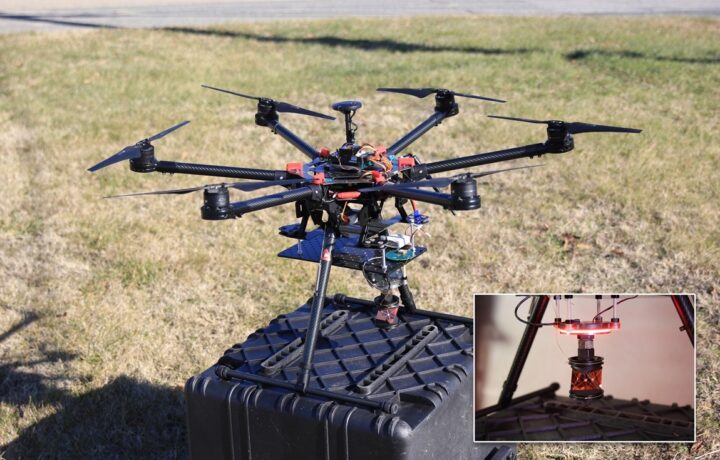The United States Air Force Armament Directorate (AFLCMC/EB) and the Defense Innovation Unit (DIU) have selected four companies to take part in a program to produce a prototype enterprise test vehicle (ETV), which will employ dual-use and commercial off-the-shelf (COTS) technology. The goal of the program is to develop an air-launched multi-purpose platform with a focus on modularity.
According to the original program solicitation, the prototypes should have a range of at least 500 nautical miles, and be able to cruise at speeds of 100 knots. In addition, the platform should be able to deliver a kinetic payload, while it could be launched by an aircraft.
“Capable of deployment en masse through multiple launch methods, ETVs could create an overwhelming dilemma for any defending adversary,” the DIU stated.
In other words, the EB and DIU may be seeking to develop a platform that could be employed in a “drone swarm.” As noted, it would overwhelm an enemy, and that could include a forward operating base, a column of vehicles, or even a warship at sea – such as an aircraft carrier.
Collaborators and evaluators in the program also include the Air Force Research Laboratory (AFRL), Special Operations Command (SOCOM), Naval Air Systems Command (NAVAIR), and U.S. Indo-Pacific Command (USINDOPACOM).
Foundation For Affordable Production Models
According to the DIU, the effort could serve as the foundation for affordable high-rate production. It added that initial flight demonstrations will occur within seven months from the agreement award dates. The prototypes will be evaluated and one or more of the “most promising” will continue development toward a production variant that could be capable of rapidly scalable manufacture.
“We are excited to partner with DIU. The ETV presents an opportunity to leverage promising ideas from industry to create and refine affordable designs for test capabilities that can be produced on a relevant timeline,” Andrew Hunter, assistant secretary of the Air Force for Acquisition, Technology and Logistics, said in a statement.
The four firms selected include Anduril Industries, Integrated Solutions for Systems, Leidos Dynetics, and Zone 5 Technologies. Those companies were chosen from a pool of more than 100 vendors, and the selected firms are expected to fly a drone prototype later this year, which will inform a subsequent DIU down-select.
COTS Considerations
As noted, the four vendors will be allowed – and even encouraged – to utilize COTS components wherever possible, in part to mitigate supply chain bottlenecks and to keep down production costs. It is common during the development of prototypes for components from other platforms to be employed rather than producing specific items, which drives up the costs.
COTS technology can further allow for interoperability with existing systems.
Moreover, the four ETV prototypes will leverage modern design for manufacturing approaches, which will help ensure the air vehicles are not “over-engineered for their intended mission.” It will further minimize the use of expensive materials while enabling on-call high-rate production that is not possible with more exquisite counterparts, the DIU noted.
“While the Armament Directorate remains committed to our highly-capable legacy products, we have become convinced that widening the aperture to include more non-traditional aerospace companies offers the best chance at accomplishing our cost-per-unit goals, project timeline, and production quantity goals,” explained Cassie Johnson, the Armament Directorate’s ETV program manager. “We eagerly anticipate bringing respectable capability to our warfighters.”
Open System Architecture
Another facet of the ETV effort is that the prototypes will utilize an open system architecture reference, which could enable future design improvements and rapid integration of subsystems.
“This award is a great example of how we are partnered closely with the Air Force to drive innovation for the warfighter, with the focus, speed, and scale necessary to achieve strategic impact. Together, we are harnessing the power of commercial technology to meet a critical operational need for straightforward, affordable, and quickly scalable autonomous systems in the air,” said Doug Beck, director of DIU. “DIU is committed to pursuing a number of initiatives to accelerate autonomy within the Department including the adoption and scaling of trusted commercial autonomy and improving our ability to counter adversarial systems.”
The fact that the program also calls for the drones not to be “over-engineered” and designed to employ open system architecture further could speak to the point that these unmanned systems may be called to make a one-way flight to disrupt and potentially destroy an enemy. Though not explicitly stated, the ETVs could be seen as somewhat “disposable.”




